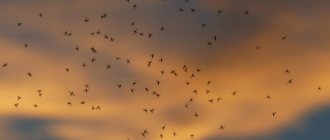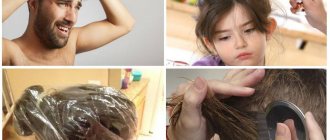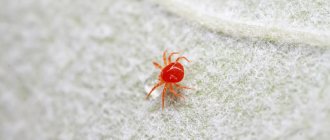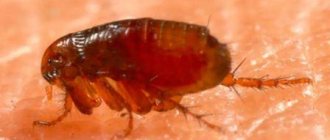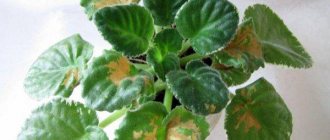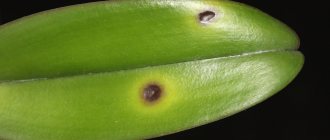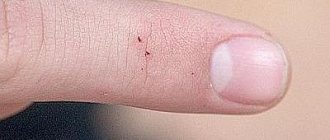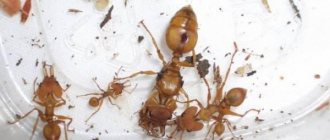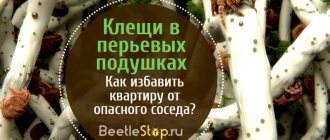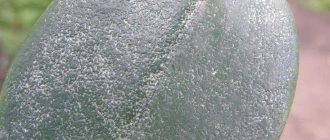Urticaria is a group of diseases (mainly of an allergic nature), the characteristic symptom of which is a rash on the skin in the form of red blisters.
In Russia, urticaria is very common - from 10 to 20% of the population have experienced its manifestations at least once in their lives. Moreover, in the majority it occurs in an acute form (70-75%), in the rest it takes a chronic course. WHO (World Health Organization) predicts that the 21st century will be the century of allergies. Every year the number of patients with one form of allergy or another increases by 5%.
Causes of the disease
The causes of urticaria in children are:
- sensitivity to allergens;
- consumption of allergens in food, their inhalation;
- taking certain medications;
- bites of some insects;
- tactile contact with the allergen (urticaria in a child may appear after sleep due to a reaction to the dye in the bedding fabric or washing powder). Source: L.V. Luss Causes and treatment of urticaria in children, swelling in children // Medical Council, 2015, No. 14
Upon contact with an allergen, inflammation occurs, fluid accumulates in the body tissues, and a rash and swelling appear. This reaction of the body is an attempt to reduce the amount of harmful substances.
Chronic urticaria, which can appear as early as one year of age, occurs due to:
- chronic or long-term gastrointestinal diseases;
- chronic inflammation;
- viral infections;
- parasite infestation;
- fungal diseases;
- disturbances in the functioning of the nervous system;
- hereditary predisposition.
The disease can be provoked by overheating or hypothermia of the skin, exposure to UV or water, when combing or injury by elements of clothing, due to severe stress. With such urticaria (it is called “cholinergic”), children do not have an elevated body temperature, and external manifestations quickly disappear (in a few minutes, maximum half an hour). Source: I.I. Balabolkin. Urticaria in children: clinical and pathogenetic variants, diagnosis and treatment // Russian Pediatric Journal, 2022, 20(2)
Parasites
Often parasitic diseases lead to pimples popping up all over the body and itching like mosquito bites. Indeed, sometimes a person is attacked by parasitic insects, such as bedbugs, ticks, fleas and others, which leave red areas on the skin. These itchy bite marks can become infected and complicated by purulent inflammation.
The symptoms of the pathological condition, when after a parasitic infection a rash similar to mosquito bites appears and itches, depends on the type of insect. In such cases, the appearance of itchy blisters may be accompanied by:
- a burning sensation and itching at the site of the lesion,
- swelling of soft tissues,
- increase in local body temperature,
- peeling after flea and bedbug bites.
Read also: Itchy and watery eyes: what to do, causes and treatment
Diagnostic methods
When this disease develops, the patient or his parents are interviewed and the symptoms are analyzed.
The doctor can make a preliminary diagnosis after examining the child’s skin. A rash with urticaria is difficult to confuse with another. However, to exclude errors and establish the cause, tests are prescribed:
- stool analysis, which will help identify parasites - they can be pathogens;
- general blood test - identifies or excludes inflammatory and immune processes;
- allergy tests - skin tests to identify the pathogen;
- liver tests - to determine liver function and exclude its pathologies.
Thyroid function may be tested because the disease can be caused by hypo- or hyperthyroidism.
Types of disease
In medicine, there are five main forms of this disease:
- chronic with periodic exacerbations;
- acute, arising and spreading rapidly;
- allergic (affects 70% of children);
- pseudo-allergic (provoked by disturbances in the functioning of the liver and digestive organs);
- hereditary non-allergic (accompanied by Quincke's edema, similar to allergic). Source: L.P. Sizyakina, A.A. Lebedenko, C.B. Maltsev, A.N. Posevina, L.A. Averkina Urticaria in children: a modern view of the problem // Medical Bulletin of the South of Russia, Reviews, 2015
Let's take a closer look at the types of urticaria, depending on the triggering factor:
- Medicinal. A type of drug allergy is a reaction to certain drugs. The most common provocateurs are iodides, streptomycin, sedatives, NSAIDs, and drugs containing gold. The rash may be accompanied by a runny nose, conjunctivitis and bronchial asthma. To cure this form of urticaria, you need to eliminate the allergen, adjust the diet, removing the brightest allergens from it - citrus fruits, red vegetables and fruits, nuts, cow's milk, fish.
- Mechanical – appears when pressure is applied to the skin. Its causes have not been reliably studied, but the disease is associated with skin sensitivity, heredity and the condition of the blood vessels. Divided into several subspecies:
- dermographic – develops quickly due to friction or pressure, often caused by wearing tight clothing;
- cold - a reaction to contact with something cold, drinks or foods;
- heat – the rash appears when the environment is hot;
- solar - occurs during prolonged exposure to the sun, manifested by swelling and red spots on the skin;
- aquagenic - rare, but very dangerous, appears upon any contact with water;
- papular - the result of an insect bite;
- cholinergic - a rash appears when the child is nervous and sweats a lot.
- Generalized. It differs in that the rash spreads throughout the body, including the mucous membrane of the oropharynx, which makes breathing difficult. Quincke's edema may develop. Such urticaria appears in children with atopic diseases and can be caused by antibiotics and NSAIDs. Rarely are food products allergens.
- Idiopathic. The cause is unknown, but itchy blisters appear regularly over a period of 6 weeks at varying intervals. The process is considered chronic. Spontaneous occurrence and the lack of diagnostic methods make it difficult to control the course of the disease, treatment and prevention.
Burns
Burn blisters can be caused by exposure to the skin from the juice of plants such as hogweed, as well as thermal factors or chemicals. In such cases, a red spot appears at the burn site, which burns and tingles. Over time, blisters on the skin develop in the affected areas, as if from a mosquito bite, and itch, which often provokes cracking and infection. Inside such a bubble there is a serous or bloody fluid.
The consequences of burns can be very different and depend on several factors:
- depth and area of affected tissues,
- individual reaction of the body,
- state of the immune system,
- tendency to form colloidal scars.
Treatment methods for urticaria in children
This disease should be treated depending on its form. The pseudoallergic variety requires examination for the underlying disease. Allergic – allergen exclusion and immunotherapy.
In the acute period:
- eliminate contact with the allergen;
- the child is prescribed a hypoallergenic diet for several days;
- remove the allergen from the body, prescribe plenty of fluids;
- use sorbents and antihistamines (types and dosage regimen are determined only with a doctor);
- for severe swelling, a specialist may prescribe a diuretic;
- Prescribe antipruritic ointments for the arms, legs, or other areas of the child’s body that are prone to hives.
Parents should carefully monitor the cleanliness of the house and promptly wash clothes and bedding with hypoallergenic products.
Are there any complications?
Acute urticaria in children can have a dangerous complication - Quincke's edema (giant urticaria, angioedema). It consists of swelling of the mucous membrane of the respiratory tract. The child has coughing attacks and has difficulty breathing. Very young children may experience swelling of the gastrointestinal mucosa (the reaction to this is vomiting). In severe cases, the membranes of the brain and nervous system are affected. Any of these conditions is very dangerous and can be fatal. Therefore, it is very important not to delay visiting a doctor if there are signs of illness.
Important! Many parents do not know what to do with Quincke's edema. You should immediately give your child an antihistamine (any one from your home medicine cabinet) and call emergency medical help.
First aid
If blisters appear on the skin, similar to mosquito bites, which itch very much, but quickly disappear without a trace, you can reduce the severity of unpleasant symptoms with the help of:
- Applying a gel with antihistamine components (Fenistil gel).
- Taking tablets of any antiallergic medication (Zyrtec, Loratadine, Erius, etc.). Children are given such drugs in the form of syrup or drops.
- Compress made from soda solution. To prepare it, you need to dilute a couple of tablespoons of baking soda in a glass of water. Soak a cotton swab in this solution and apply it to the problem area for about five minutes.
- Green tea compress.
If the blisters become more and more numerous literally before your eyes, it is better not to risk it and immediately seek medical help.
Disease prevention methods
There are no special preventive measures. However, you can minimize the risk of developing the disease by following these recommendations:
- control the child’s diet;
- exclude contacts with potential allergens - food, volatile, contact;
- have an antihistamine in your home medicine cabinet;
- buy your child loose clothes made from natural fabrics;
- do not provoke stress in the child;
- do not trigger chronic diseases.
Sources:
L.V. Luss. Causes and treatment of urticaria in children // Medical Council, 2015, No. 14
I.I. Balabolkin. Urticaria in children: clinical and pathogenetic variants, diagnosis and treatment // Russian Pediatric Journal, 2022, 20(2)
L.P. Sizyakina, A.A. Lebedenko, C.B. Maltsev, A.N. Posevina, L.A. Averkin. Urticaria in children: a modern view of the problem // Medical Bulletin of the South of Russia, Reviews, 2015
The information in this article is provided for reference purposes and does not replace advice from a qualified professional. Don't self-medicate! At the first signs of illness, you should consult a doctor.
When to see a doctor?
Unfortunately, when blisters appear on the body and itch like mosquito bites, people do not always make the right decision and seek specialized help. Most patients prefer to first try a lot of folk remedies or self-medicate the problem, which is a huge mistake. And the point here is this. The loss of precious time leads to complication of the disease and the occurrence of a number of complications, among which the following are most often diagnosed in medical practice:
- infection of affected areas of the skin with the development of purulent processes,
- scarring of tissue in the area where blisters appear, hyperpigmentation of the skin, which is a visible cosmetic defect,
- decreased immunity due to prolonged absence of necessary and competent treatment.
People who have acne like mosquito bites all over their body and are accompanied by the following health changes should visit their doctor's office immediately:
- an increase in general temperature and an increase in symptoms of intoxication,
- generalization of the rash,
- the appearance of swelling and severe itching in the area of the rash,
- lack of positive treatment results when the rash does not go away for a long time,
- if weeping wounds with a bleeding surface appear in places where blisters develop,
- rapid spread of edema.
It is important to remember that medical care should not be neglected when it comes to young children, since often a rash similar to insect bites in them may indicate the development of infectious diseases, sometimes very life-threatening.
Prices
| Name of service (price list incomplete) | Price |
| Appointment (examination, consultation) with an allergist-immunologist, primary, therapeutic and diagnostic, outpatient | 1750 rub. |
| Prescription of treatment regimen (for up to 1 month) | 1800 rub. |
| Consultation (interpretation) with analyzes from third parties | 2250 rub. |
| Consultation with a candidate of medical sciences | 2500 rub. |
| Allergen-specific immunotherapy (ASIT) - maintenance course (excluding the cost of the drug) | 8100 rub. |
